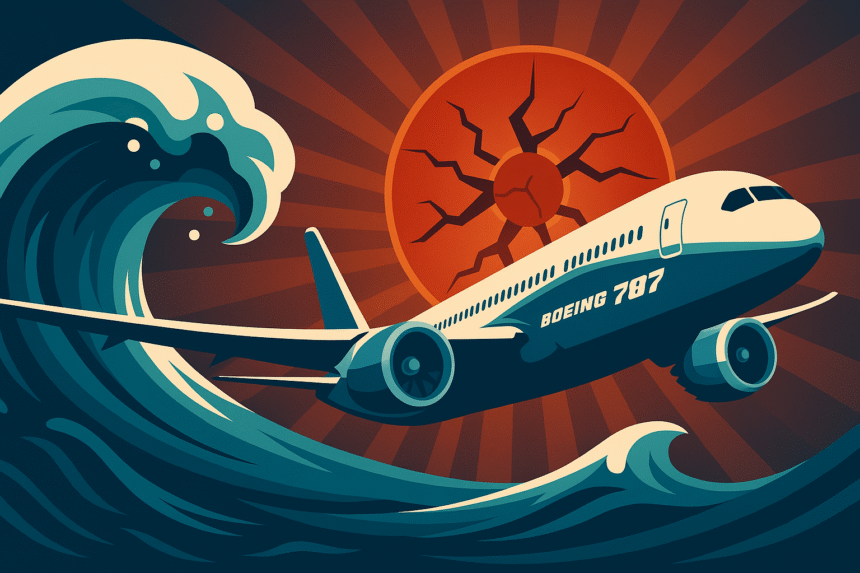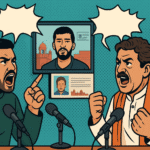It’s not every day the Earth decides to shake things up—literally. But when it does, it doesn’t ask for permission. And this time, it wasn’t a small tremor. It was an 8.8 magnitude monster of an earthquake, rumbling beneath the seas off Russia’s Far East coast, just south of the Kamchatka Peninsula.
- 🌍 The Quake that Shook Kamchatka—and the World
- 🌀 Tsunami Warnings: Who Got the Siren?
- 🕒 Wave Watch: The Timeline of Tension
- 🧭 Why This Quake Mattered More Than Others
- 📢 Leaders React: “Stay Strong, Stay Safe”
- 📊 What the Stats Say
- 💡 Earthquake Tsunami Lessons We Can’t Ignore
- 🚨 What to Do If You Hear a Tsunami Warning
- 🌐 Final Word: The Earth Is Loud. Are We Listening?
And what followed? The dreaded T word.
Yes, a full-scale earthquake tsunami alert was declared across a massive stretch of the Pacific, including California, Alaska, Hawaii, and Japan. People who were sipping coconut water by the beach suddenly found themselves scrambling uphill. This wasn’t a movie—it was Mother Nature, unplugged and unscripted.
🌍 The Quake that Shook Kamchatka—and the World
Late evening local time, the earth roared beneath the Pacific near Petropavlovsk-Kamchatsky. The tremor, clocked at a jaw-dropping 8.8 on the Richter scale, wasn’t your average shaker. Its shallow depth made it far more dangerous, displacing enough seawater to send shockwaves—quite literally—across the globe.
People in nearby Russian towns, like Severo-Kurilsk, saw waves several meters high slamming into docks, streets, and homes. Panic spread faster than the wave, but early warnings helped minimize damage. A few injuries were reported—mostly from hurried evacuations—but thankfully, no lives lost at the time of writing.
🌀 Tsunami Warnings: Who Got the Siren?
The moment the quake struck, tsunami warning systems went into overdrive.
- Japan: Emergency evacuation orders were issued for nearly a million people. From Hokkaido to Okinawa, residents headed for higher ground.
- Hawaii: Sirens wailed. Residents in low-lying areas were told to evacuate. Surfboards were traded for suitcases.
- California & Oregon: Advisories were announced. Beaches closed. Harbors emptied. Surfers sulked.
- Alaska: High-alert status in coastal towns, especially the Aleutians.
This wasn’t just a regional quake. It was a full-blown earthquake tsunami scenario affecting multiple nations at once.
🕒 Wave Watch: The Timeline of Tension
Timing is everything when a tsunami is racing toward shore. Here’s how the clock ticked:
- Russia: Within 20 minutes of the quake, waves were seen rising.
- Japan: Within an hour, tidal anomalies began. Luckily, the first waves were under 1 foot—but the fear was much bigger.
- Hawaii: Estimated wave arrival within 6–7 hours of the quake. Sirens gave ample time to move.
- US West Coast: Waves of under 1 foot reached cities like Monterey and Santa Cruz, yet harbors and piers remained on alert all day.
Though most waves were minor in height, the currents were deadly. Officials warned that even 1-foot waves can pack enough force to toss boats or drag people off rocks.
🧭 Why This Quake Mattered More Than Others
Kamchatka isn’t new to seismic drama. Sitting on the Ring of Fire—the world’s hottest zone for tectonic turbulence—this area has delivered many quakes over the decades.
But this one stands out for two reasons:
- Sheer size: An 8.8 magnitude earthquake doesn’t happen every day. It’s one of the biggest in decades.
- Global chain reaction: From Russia to America, half the Pacific went on high alert. That kind of domino effect is rare and dangerous.
In simpler words: when Kamchatka rolled over in its sleep, the whole Pacific basin sat up straight.
📢 Leaders React: “Stay Strong, Stay Safe”
As warnings spread, world leaders took to airwaves and social media urging calm.
In the US, public figures issued appeals to remain alert and follow evacuation guidelines. Hawaii activated its full tsunami response protocol, including opening shelters and mobilizing the National Guard.
The message was clear: No need to panic—but absolutely no time to relax.
📊 What the Stats Say
Let’s break it down:
| Event Detail | Value |
|---|---|
| Earthquake Magnitude | 8.8 |
| Epicenter | Near Kamchatka Peninsula |
| Tsunami Warnings Issued | US West Coast, Hawaii, Japan, Alaska |
| Highest Recorded Wave | ~4 meters (Russia) |
| US Wave Impact | Under 1 foot (but dangerous currents) |
| Estimated Evacuees in Japan | ~900,000 |
The waves may not have reached Godzilla heights—but in a tsunami, size isn’t the only story. The power of the water’s pull, especially in enclosed harbors and coves, can cause as much devastation.
💡 Earthquake Tsunami Lessons We Can’t Ignore
Every major natural event comes with a notebook of lessons. This one scribbled a few urgent ones in bold red ink:
- Preparedness saves lives: Early warnings, practiced drills, and evacuation routes work. They’re not just checkboxes—they’re lifelines.
- Never underestimate small waves: People tend to think a tsunami has to be 20-feet tall to be deadly. Wrong. Even minor surges can turn the tide—literally.
- Global coordination is key: Tsunami alerts aren’t local affairs anymore. What happens in Russia can empty a beach in California within hours.
- The ocean holds grudges: Energy travels far in water. A jolt in one corner can echo across continents.
🚨 What to Do If You Hear a Tsunami Warning
Let’s be practical. If your phone buzzes or you hear sirens wailing while you’re lounging at the beach, here’s what you do:
- Drop the mojito. This isn’t a drill.
- Get uphill or inland immediately. Don’t wait to see the wave.
- Don’t take selfies. The ocean does not care about your Instagram feed.
- Stay away until authorities give the all-clear. Sometimes the biggest wave comes hours after the first.
🌐 Final Word: The Earth Is Loud. Are We Listening?
This massive earthquake tsunami situation was a warning siren not just from the earth but from reality. In an increasingly fragile planet, preparedness isn’t paranoia—it’s wisdom.
The sea may look calm right now, but beneath its blue shimmer lies unpredictable fury. We can’t control tectonic plates. But we can control how quickly and smartly we react.
So, the next time the earth shivers beneath our feet, let’s remember—safety isn’t just a plan; it’s a mindset.












